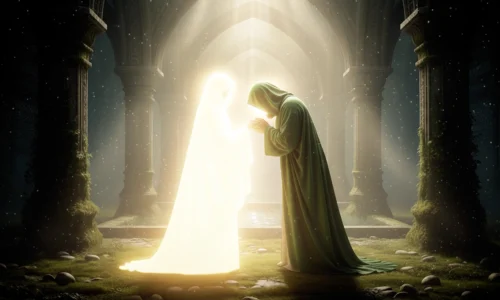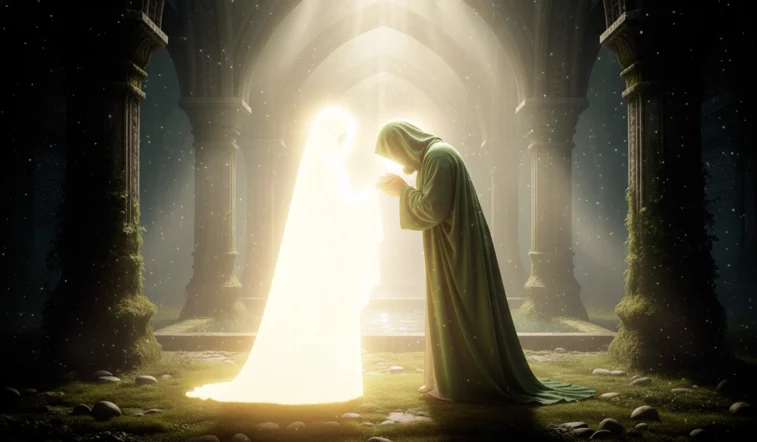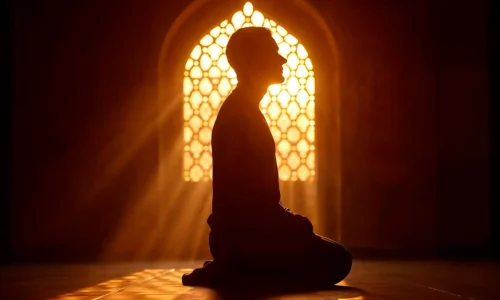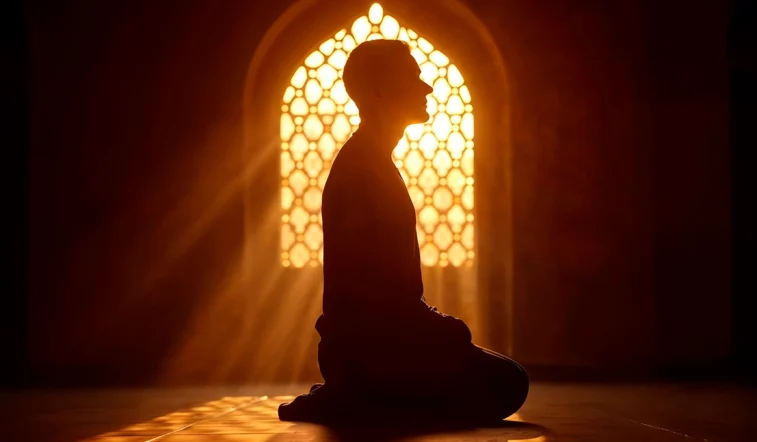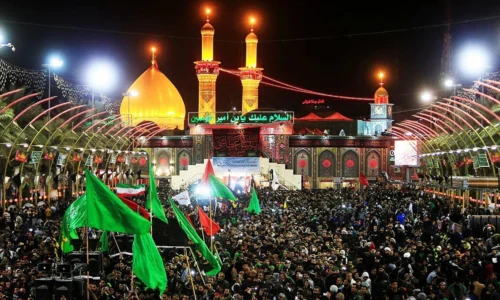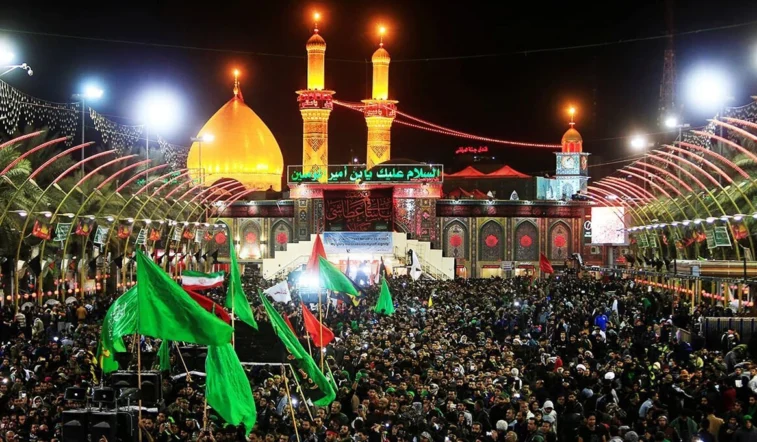Throughout history, humanity has looked forward to a time when justice will prevail, oppression will end, and truth will triumph. This yearning is not limited to one culture or religion—it spans across civilizations and spiritual traditions. At the heart of this shared hope lies the concept of a final redeemer: a divinely guided figure who will usher in an era of peace and righteousness. In Islamic eschatology, this figure is Imam Mahdi (peace be upon him). Remarkably, the promise of such a savior echoes in the holy scriptures of many world religions, pointing to a universal prophecy rooted in the spiritual consciousness of mankind.

Islam: The Awaited Mahdi and the Triumph of Justice
In Islamic eschatology, the figure of Imam Mahdi holds a central and revered role, especially within Shi’a Islam, where he is recognized as the twelfth and final Imam. Known as Muhammad al-Mahdi, he is believed to be currently in occultation (Ghaybah)—a state of divine concealment—and will reappear at a divinely appointed time to restore justice, equity, and peace to a world overwhelmed by injustice and tyranny. This awaited leader is considered the ultimate savior who will unite Muslims and establish a global era of righteousness and fairness.
The concept of the Mahdi is affirmed in both Shi’a and Sunni traditions. Although there are some theological differences, the essential belief in the Mahdi’s reappearance is shared, underscoring the unifying theme of divine justice in Islamic teachings. The Mahdi is described as a descendant of the Prophet Muhammad’s family (Ahl al-Bayt), specifically from the lineage of his daughter Fatimah and son-in-law Ali ibn Abi Talib, making him part of the sacred Imamate lineage in Shi’a theology.
While the Quran does not explicitly mention the Mahdi by name, its verses emphasize the divine promise of justice and the eventual triumph of the oppressed:
“Indeed, We will grant inheritance to those who were oppressed upon the earth and make them leaders and make them inheritors” (Quran 28:5).
This verse highlights a key theme central to Mahdist expectations: the reversal of injustice through the rise of divinely guided leadership. It sets the foundation for understanding the Mahdi’s mission as a restorer of justice and an ender of tyranny.
The Hadith literature, which contains the sayings and traditions of Prophet Muhammad, offers more explicit references about the Mahdi’s identity and role. For example, a widely cited narration from Sunan Abu Dawood states:
“Even if only one day of this world remained, Allah would lengthen that day until He sends a man from me—or from my family—whose name will be the same as mine, and who will fill the Earth with justice and fairness just as it had been filled with oppression and injustice.”
This hadith emphasizes several important keywords tied to the Mahdi: his divine appointment, his lineage from the Prophet, his name matching Muhammad’s, and his mission to eradicate oppression and establish justice on Earth.
In Islamic theology, the Mahdi’s reappearance is not merely a political or social event but a deeply spiritual and cosmic phenomenon. It signals the final phase of human history before the arrival of the Day of Judgment (Qiyamah) and the return of Prophet Jesus (Isa, peace be upon him), who according to Islamic belief will join the Mahdi in defeating evil and establishing lasting peace.
The concept of the Mahdi also serves as a source of hope and resilience for millions of Muslims worldwide. It encourages patience, faith, and moral uprightness during times of hardship, corruption, and widespread injustice. The Mahdi’s awaited reappearance symbolizes the ultimate divine justice, the restoration of true Islamic governance (Hakimiyyah), and the fulfillment of God’s promise to uplift the oppressed.
Don’t Miss These Related Stories:
- Imam Mahdi in Quran and Hadith
- Imam Mahdi Shia vs Sunni belief
- The identity of Imam Mahdi (AJ), the 12th Imam
- Imam Mahdi signs of reappearance
- Who will support Imam Mahdi?
Christianity: The Second Coming of Jesus
In Christianity, the belief in the Second Coming of Jesus (peace be upon him) holds central eschatological importance. Christians await his return as the ultimate redeemer who will defeat the Antichrist, judge humanity, and establish a kingdom of God on Earth.
According to the Book of Revelation:
“He will wipe every tear from their eyes. There will be no more death or mourning or crying or pain…” (Revelation 21:4)
Many Muslim scholars believe that Imam Mahdi and Jesus will work in harmony—Mahdi leading the ummah (community), and Jesus returning to support and validate his mission, ultimately defeating falsehood together.
What Else You Need to Know:
Judaism: The Messiah in the Torah and Talmudic Prophecy
The Jewish tradition speaks of a messianic age led by a future descendant of King David—the Mashiach—who will gather the Jewish exiles, rebuild the Temple in Jerusalem, and bring global peace and divine knowledge.
The Prophet Isaiah writes:
“He will judge between the nations and will settle disputes for many peoples. They will beat their swords into plowshares… Nation will not take up sword against nation, nor will they train for war anymore.” (Isaiah 2:4)
This concept mirrors the Islamic belief in a just ruler who will bring about global transformation under divine guidance. Though the names and theological frameworks differ, the essence remains the same: a time of justice and truth led by a chosen one.
Hinduism: The Coming of Kalki
Hindu scriptures foretell the arrival of Kalki, the tenth and final avatar of Lord Vishnu, who will appear at the end of the current age (Kali Yuga) to rid the world of darkness and restore dharma (righteousness).
The Vishnu Purana states:
“When the practices taught in the Vedas and institutes of law have nearly ceased, and the end of the Kali Yuga approaches, the Lord will appear as Kalki… and destroy all the wicked, and restore the minds of those who survive to purity.”
The narrative of Kalki’s arrival resonates with the Islamic idea of Mahdi emerging in a time of global moral decay to establish a just order.
Buddhism: Awaiting Maitreya
In Buddhist eschatology, Maitreya is the future Buddha who will appear in a time when the teachings of the current Buddha (Siddhartha Gautama) have been forgotten. Maitreya will renew the dharma and guide humanity back to enlightenment and compassion.
According to Anagatavamsa:
“He will rediscover the eternal truths and preach them anew… The world will again be filled with peace, harmony, and righteousness.”
Just like Imam Mahdi, Maitreya represents hope for a moral resurgence in an era of widespread suffering.
A Universal Yearning for Divine Justice
Despite vast differences in language, culture, and religious tradition, the archetype of a final savior emerges consistently across world faiths. Whether called Mahdi, Messiah, Kalki, or Maitreya, this figure symbolizes divine justice, moral renewal, and the victory of truth over falsehood.
This widespread belief underscores a profound spiritual truth: humanity, in its deepest essence, longs for divine intervention in times of darkness. Imam Mahdi’s awaited return, while grounded in Islamic doctrine, connects with a global prophecy—a sacred expectation that transcends religious boundaries and unites believers in hope for a just and illuminated world.
